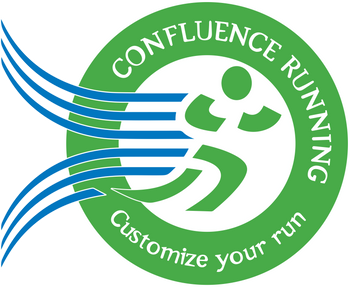How to Adjust Your Training: New Race Distance
Whether you run long or short distance, switching your race distance can be quite a daunting process. It is easy to understand why. Different race distances require different qualities in runners. Short bursts of speed could be desirable in one race distance, but it could lead to suboptimal performance in another.
In essence, when switching race distances, it is necessary to change how you prepare yourself. To get the best results, you'll have to adapt your training to fit the race distance and develop the right qualities. If you have no idea how to change training when switching race distance, don't worry, we are here to help. In this article, we will highlight the different ways you'll need to adapt your preparation for a new race distance. Let's dive right in:
Identify what qualities you require for your new race distance
You can only adequately prepare for a new race distance when you understand what is required. It is therefore necessary that you identify the demands of your new race distance. Fundamentally, short-distance races like 100m and 200m require quick bursts of speed. This means you have to be able to accelerate quickly in order to win. Long-distance races demand endurance, not just acceleration. The level of endurance you'll need would depend on the exact long-distance race you're competing in.
For instance, 5k and 10k races are typically regarded as medium distance as they require some level of endurance running. Nevertheless, you cannot compare these races to a marathon, which requires a much higher level of endurance. Therefore, if you are preparing for a marathon or a half marathon, you'll need to increase your endurance significantly.
Another quality to pay attention to is your lactate threshold. This is how long you are able to run before feeling a buildup of lactate. Lactate is what causes soreness in your muscles the next day, so a high threshold is advised. Similarly, you want to consider your maximum aerobic capacity, which measures how efficiently your heart and lungs circulate oxygen in your muscles.
Improve your running fitness
Without taking on any race-specific workouts, it is crucial that you improve your overall running fitness. You can do this by running further and being consistent with your training sessions.
In this regard, you should also pay attention to your nutrition. It's important to consume carbohydrates as they provide the essential macronutrients you need for running. Similarly, you should consume protein to maintain your muscle mass and help with muscle repair. Finally, if you need to lose excess weight, you can adopt a fat loss regimen.
Adopt a race-specific training style
While you can perform regular training routines that help you improve as a runner, you will only get the best results through race-specific training. This is particularly critical in the last 6 to 4 weeks of your training towards your goal race. It is worth noting that while race-specific training would certainly improve your performance at a certain distance, other distances are likely to suffer.
Here are a couple of race-specific training routines you can try out:
5K races: The goal with a 5K race is to improve your speed endurance so you can keep a fast pace for a longer time. You can start with 12 x 300 meters at a 5K pace with 100 meters rest. You can then proceed to run 16 x 400 meters at a 5k pace with jog rest.
10k races: A 10k race is quite similar to a 5k race, except that you have to hold your pace for twice as long. You can train with 5 x 1 mile at 10k pace with 50 seconds of jog rest. Alternatively, you can run 3 x 2 miles with 2 minutes of jog rest.
Half marathon: At this distance, you must primarily be able to clear lactate while running. Similarly, you must train your legs to endure the stress of running above 10 miles. For this distance, your starting workout can be 3 x 2 miles at a half marathon pace with 800m of jog rest. You can increase this to 3 x 3 miles as you get comfortable.
Marathon: It isn't easy to get a race-specific workout for a marathon as you cannot simulate a marathon in one run. Nevertheless, there are workouts you can adopt to improve endurance and help you run, even while fatigued. You can try the 2 x 6-mile workout that was popularized by runners in the Hansons Olympics Development Project. Generally, this workout is done at 10-30 seconds faster than the marathon pace with 10 minutes of rest. This would help you burn fat more efficiently and improve your ability to run on tired legs. Lastly, this workout gives you a chance to get familiar with the “dead leg” sensation you might get in an actual marathon.
Prioritize recovery
Many runners try to do too much in too little time. While this might seem like a great way to make lots of progress in a short period, it isn’’t. In fact, this kind of strategy could increase your risk of injury or result in extreme fatigue. It is important that you schedule rest days into your weeks of training. This should give your body adequate time to adapt, therefore improving your performance.
Generally, it is advisable to alternate a hard training day with a rest day. You can alternate with an easy training day if you don't require a full rest day. What's important is that you don't overstrain your body and impede your progress.
Final Thoughts
Changing your race distance is a process that necessitates several changes to training routines. However, as you are adapting your training to your new distance, it is essential to remember to take your time with things. It's generally best to gradually increase your training load and rest appropriately. This way, your body gets time to adapt, and you avoid injuring yourself.
